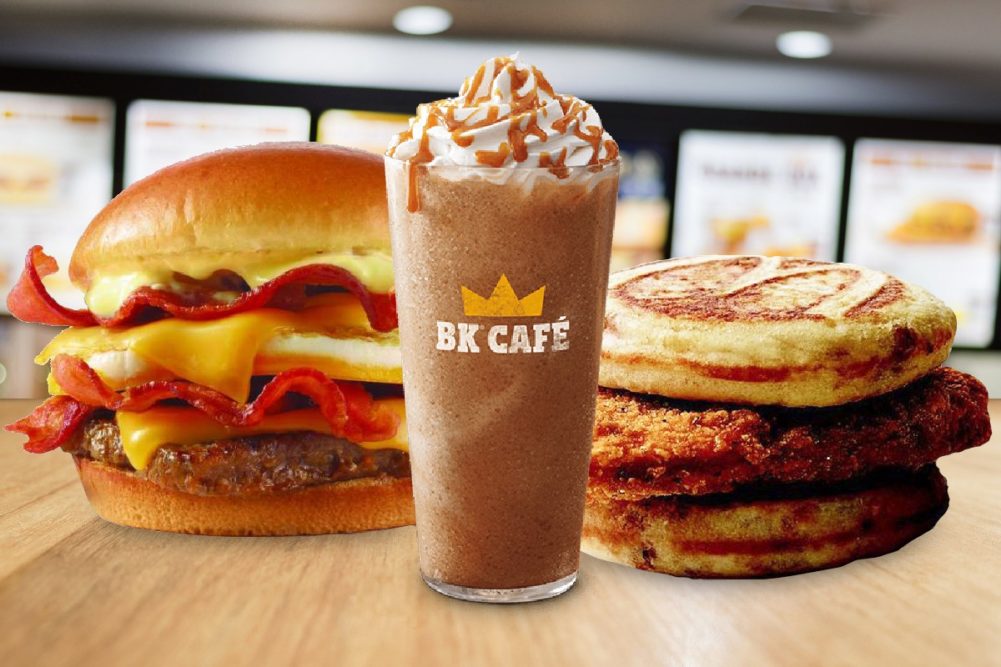KANSAS CITY — The traditional notion of breakfast as the most important meal of the day no longer just applies to a healthy diet. The morning daypart also is an important market for quick-service restaurants (QSRs).
Wendy’s national breakfast roll-out on March 2 will mark its fourth attempt at breaking into the daypart. The company said it learned from past mistakes and used them to shape its current strategy, which includes a simpler menu and less staff to execute. It invested $20 million to prepare for the launch and anticipates hiring as many as 20,000 new employees.
Wendy’s management expects breakfast to account for 10 percent of daily sales.
There’s good reason for this optimism. Breakfast foot traffic at QSRs increased more than 7 percent between 2014 and 2019, while traffic during lunch and dinner decreased about 1 percent, according to The NPD Group.
“In the last decade the number of in-home prepared and consumed breakfasts declined, but consumers aren’t skipping this meal more often,” said Darren Seifer, food and beverage industry analyst at The NPD Group. “There has been an increase in morning snack occasions as well as restaurant meals that nearly equals the in-home decline.”
Consumer spending on QSR breakfast items last year was up 31 percent from five years ago. Convenience is a major growth driver, with a third of consumers ages 18-34 eating weekday breakfasts en route to another location.
“A national breakfast launch provides incredible growth opportunities,” said Todd A. Penegor, president and CEO at The Wendy’s Co. “We are well-positioned to pursue it. We believe we have the right team and structure in place.”
Taking market share won’t be easy, though. Sustained growth in breakfast business remains elusive, despite the overall increase in traffic. While morning traffic continues to be on the upswing, year-over-year growth has leveled slightly since peaking in 2016.
The competitive pressure also is heating up as more brands focus on getting a bigger share of the $234 billion daypart.
McDonald’s has managed to hold onto its dominant position in breakfast, though it has struggled to maintain traffic growth over the past several years. Executives at the company told analysts last month they are focused on boosting overall guest counts by stemming losses in the morning daypart.
“We have a really good understanding of what it’s going to take for us to drive guest counts to positive in the US,” said Chris Kempczinski, CEO at McDonald’s, during a Jan. 29 conference call. “It starts with breakfast. Breakfast is the only daypart in the industry that’s seeing traffic growth. We have to win at breakfast. There’s obviously a lot of focus and attention that we’re going to be putting on that in 2020.”
This includes a renewed focus on value, such as the new mix and match breakfast sandwich deal, which allows customers to order two sandwiches for $4. McDonald’s also is evolving its menu beyond traditional breakfast proteins. The company announced two new chicken items, a McChicken biscuit and chicken McGriddle, in January.
While convenience remains the key driver of growth, the trend toward protein-heavy diets also may be leading some consumers to ditch cereal in favor of on-the-go items featuring eggs, sausage and bacon. Close to a quarter of consumers overall and a third of millennials said they would like to see more chicken and turkey options on breakfast menus, according to Technomic.
Wendy’s breakfast menu also will feature several chicken items, such as the maple bacon chicken croissant and honey butter chicken biscuit. Jack-in-the-Box and Chick-fil-A also have found success with chicken. Burger King’s morning menu features ham alongside traditional bacon and sausage offerings.
Other companies also have upped their breakfast game recently. Some, like Dunkin’ and Hardees, have tapped into the protein-rich diet trend with plant-based offerings from Beyond Meat. Taco Bell, which offers twists on traditional morning fare in the form of crunch wraps and quesadillas, has seen a steady increase in breakfast traffic since launching the daypart in 2014.
Boosting sales in the morning daypart is a priority at Burger King. Executives at parent company Restaurant Brands International told investors last year they wanted to lift the daypart to more than 15 percent of total sales and will spend accordingly. Declines in the daypart during the first part of the year partially were addressed with the launch of the BK Café program, which allows users to order coffee anytime, any day for a $5 monthly subscription.
“There is long-term opportunity for our breakfast business,” said Jose Cil, CEO at Restaurant Brands International. “Our focus continues to be on driving more guests into the restaurants.”
Competition is coming from outside the QSR space, too. 7-Eleven and Wawa Inc. have bolstered their breakfast sandwich and pizza offerings in an effort to drive morning traffic.
Starbucks is looking to attract morning customers by emphasizing speed and convenience. The company has emerged as a leader in the morning daypart, with its share of QSR breakfast visits growing to match McDonald’s in 2019, according to inMarket. It is looking to further strengthen its position in breakfast through an expanded delivery partnership with UberEats. The company also plans to attract protein-oriented eaters with a new plant-based breakfast patty, set to launch later this year.


